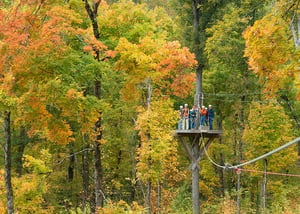In 2015 at a summer camp in North Carolina, a 12-year-old girl fell more than 40 feet to her death when a tether attaching her to the camp’s zip line snapped. The camp had dual zip lines and somehow the lines became tangled. Her tether essentially melted from the friction. The camp closed the zip line for the rest of the summer after this devastating tragedy.
Injuries
While zip line deaths are still a relatively rare phenomenon, as this activity becomes more popular, injuries are also on the rise. A recent study of zip line injuries in the last 16 years revealed that most of these injuries occur at commercial courses and camps. Falls, collisions, and crashing into objects at the end of the course were all common accidents. Authors of the study found that 12% of these injuries resulted in hospital stays, which is a higher rate than many other sports.
Safety Tips
Zip lines are extremely popular and a huge draw for summer camps. With proper safety protocols to minimize some of the risk, campers can still experience the fun and excitement of a zip line course. The American Camp Association offers some zip line safety tips:
- Staff Training: It’s extremely important to properly train staff who will be operating the zip line. Spend time and resources making sure staff members are very comfortable and competent with the zip lines.
- Trainer Qualifications: Whoever is training staff members on zip line procedures should be certified by a professional organization, like the Association for Challenge Course Technology or the Professional Ropes Course Association.
- Supervisor Knowledge: Supervisors need to be knowledgeable and comfortable with the camp’s zip line system.
- Equipment Maintenance: Equipment must be thoroughly inspected for damage or excessive wear before each use. Replace anything that’s looking even slightly worn.
- Inspections: Every year the entire zip line system should be inspected by a certified professional. This is critical to ensure the system is still working properly and safely.





